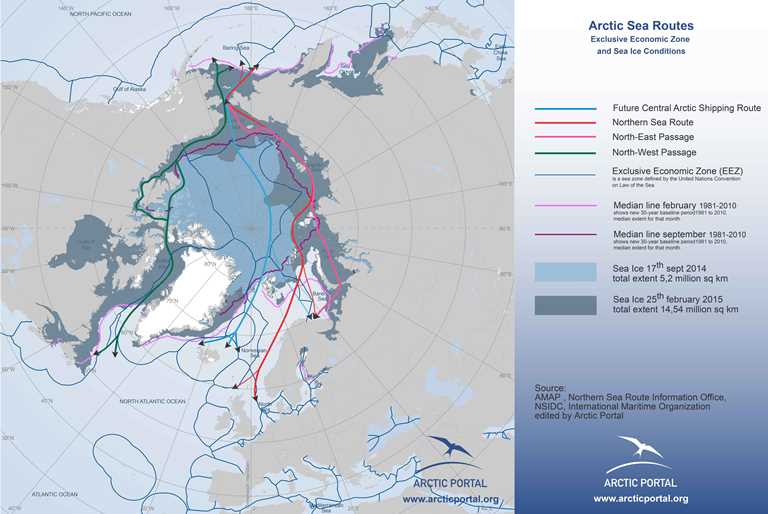The Fennica, a multipurpose icebreaker and platform supply vessel, and the Nordica, also equipped with a 160-ton crane, both owned by the Finnish Arctia, reached the harbour of Nuuk on October 31st, after a "late-season" journey through the Northwest passage.

"The Northwest Passage is a sea route connecting the Pacific and Atlantic Oceans through Arctic waters via the Canadian Arctic Archipelago. Both icebreakers are returning from their summer season ice management missions in the Chukchi Sea, off the coast of Alaska", Arctia website reports.
Arctia’s icebreakers already have experience from the Northeast Passage, i.e. the shipping route connecting the Pacific and the Atlantic along northern coasts of the Eurasian landmass. However, this is the first time Finnish icebreakers are sailing through multiyear sea ice in the sounds of the Northwest Passage. Compared to the traditional commercial route connecting the Pacific and the Atlantic through the Panama Canal, the Northwest Passage is significantly shorter saving both time and fuel.
This journey also offers Arctia a unique opportunity to cooperate with Canadian partners, observe multiyear ice on the route, and demonstrate the performance and operability of Finnish icebreakers even in the most demanding Arctic conditions. On board the icebreakers is an international group of scientists observing nature, Arctic fauna, as well as weather and ice conditions.
On board Nordica sail journalist Heikki Haapavaara and photographer Jarmo Vehkakoski from Kauppalehti, a commerce-oriented newspaper published in Helsinki. Previously they have already documented their icebreaker voyage through the Northeast Passage. Now they blog daily from the Northwest Passage in Finnish.
Arctia’s multi-purpose icebreakers Nordica and Fennica are built in Rauma, Finland. Both are unique in a global sense – powerful icebreakers with properties ideally suited for tasks requiring maneuverability and accuracy in demanding Arctic conditions. In addition to outstanding icebreaking capacities, Fennica has a large working deck and an A-frame, making it useful in a wide range of research and offshore operations from ice management to anchor handling and other support vessel functions. Nordica's specialty is a 160-ton crane, with an optional onboard A-frame. As her sister ship Fennica, Nordica meets strict EPA requirements on environment and emissions, making it an ideal choice for operations in the Arctic.
Source: Arctia
